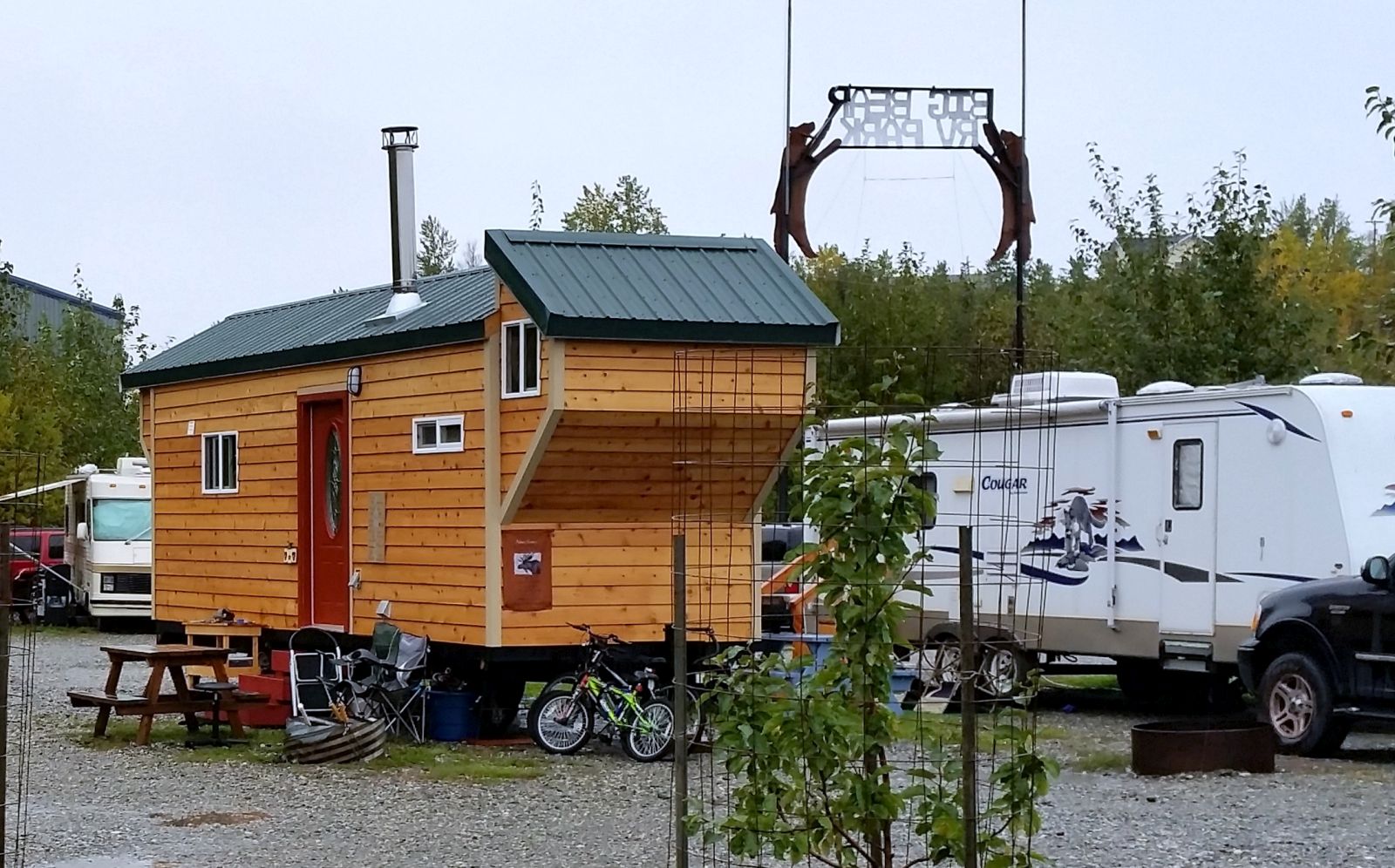Q. Dear Umbra,
I’m kind of fascinated by the tiny house movement because they’re cute. But if they’re on wheels, I really don’t see why people don’t just buy a trailer (I guess toxic building materials may be an issue). What is the resource impact of a tiny house when they don’t have to meet basic energy codes for insulation, windows, etc.? I assume most are heated with propane. How is sewage handled, and who’s paying for demands on infrastructure if someone is essentially squatting on a property without proper hookups?
Ginger W.
Richland, Wash.
A. Dearest Ginger,
The internet has so many black holes — cat videos, top 10 lists, Pinterest boards about weird fashion trends — but for me, tiny-house blogs have some of the strongest gravitational pull. Detailed blueprints; how-tos on fitting lofted beds over kitchen sinks over sweater storage; and gorgeous photo after photo of sleek, efficient, cozy living spaces … Oh, good heavens, there go another three hours. Thank you for the excuse to pore over tiny house literature and call it work today.
It turns out that your question — why not just buy an RV? — is a common one for the tiny-house curious. There are several reasons why not, which we’ll get to in a moment, but first, a quick explanation of why these houses are often on wheels. It’s not for mobility; rather, they’re wheeled to better swerve around local building codes that dictate minimum square footage or other requirements. If it has wheels, you see, it’s not technically a house. If your primary reason for seeking an incredible shrinking home is for travel, you’re better off with a lighter, more aerodynamic RV.
But of course, one could park a camper and use it like a tiny house, too. So why else would someone pick the micro-home over the ready-made RV? Beyond wanting to find love and/or a shot at reality TV stardom, there are five main reasons, I think:
1. Tiny houses let you breathe easier. As you note, Ginger, some RVs come standard with troublesome toxin problems, most notably off-gassing formaldehyde. This carcinogenic chemical is used in some glues and particleboard furnishings common in RVs, and CDC testing detected high levels of it in FEMA mobile homes used after (long after, as it happens) Hurricane Katrina. Volatile organic compounds (VOCs) from carpets and paints are another health concern. One can shop around for greener campers that use cleaner materials, but it’s simple to skip off-gassing materials when you’re custom-building your own tiny new home.
2. Tiny houses are warmer — and cooler. One of the biggest differences between your average road warrior RV and a tiny house? The mini is designed for year-round living, while the RV is meant for the milder seasons. So while tiny houses might not have to meet energy codes for traditional buildings, they can be (and often are) insulated for harsher conditions, and feature double-paned windows. And the people who set up tiny houses tend to be doing so at least partially for environmental reasons, so it wouldn’t make much sense for them to slap up a thin vinyl wall and then crank up the propane (or electric heater) all winter.
3. Tiny houses can be hooked up to the grid … Depending on where you plop your tiny house, which in turn depends on your community’s regulations and/or the fussiness of your neighbors or mother-in-law, tiny houses on RV lots or in back yards can be connected to municipal sewer or septic systems. They can also hook into the electric grid via extension cords and water via hoses and faucets. In those cases, the owners are paying for their own infrastructure, not exactly squatting.
4. … or totally off the grid. Even better, though, tiny houses offer the very exciting opportunity to go all-in with renewable energy and self-contained systems. Because they’re, well, tiny, these homes have a correspondingly tiny energy demand — so they’re primed to run on small solar systems. Off-the-gridders may also build in water tank systems, which need not be huge if you also conserve with features like composting toilets and rainwater-collection getups.
5. Tiny houses have green building in their DNA. And finally, Ginger, many diminutive dwellings involve a lot of custom design — which means lots of ways to incorporate sustainable features right from the get-go. Passive solar heating? You got it. Salvaged, recycled, and/or recyclable building materials? Step right up. Gray water filtration systems? Check. If you have an extra five minutes (or hey, three hours), you can get a sense of the cool green options available to tiny homeowners here.
You ask about the resource impact of tiny structures-on-wheels, and the short answer is: It’s a whole lot smaller than the places most of us live. Given all that, I’d say tiny houses have more than cuteness going for them. But I’m going to check out a few more photos — you know, for the sake of scientific completeness.
Teensy-weensily,
Umbra



